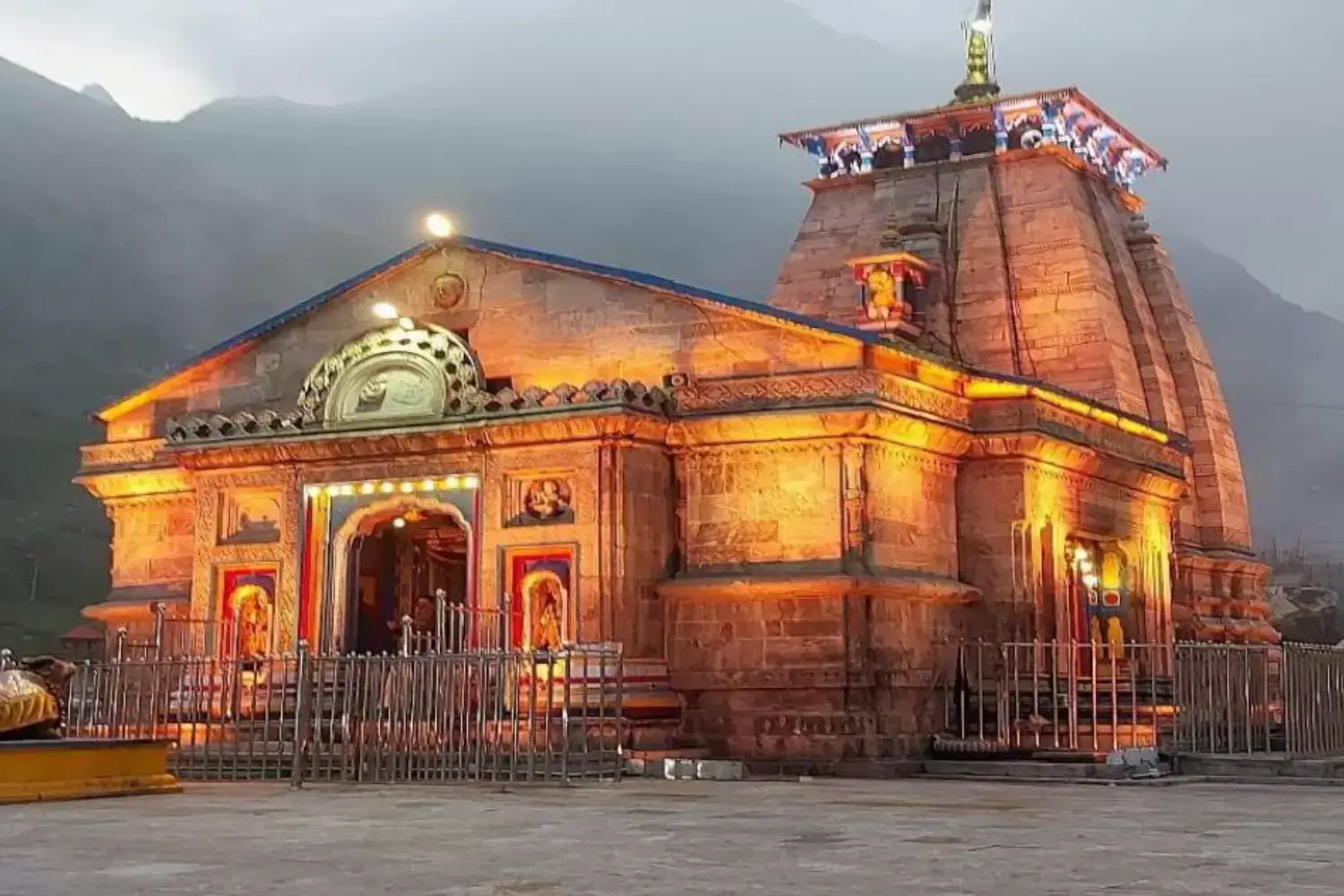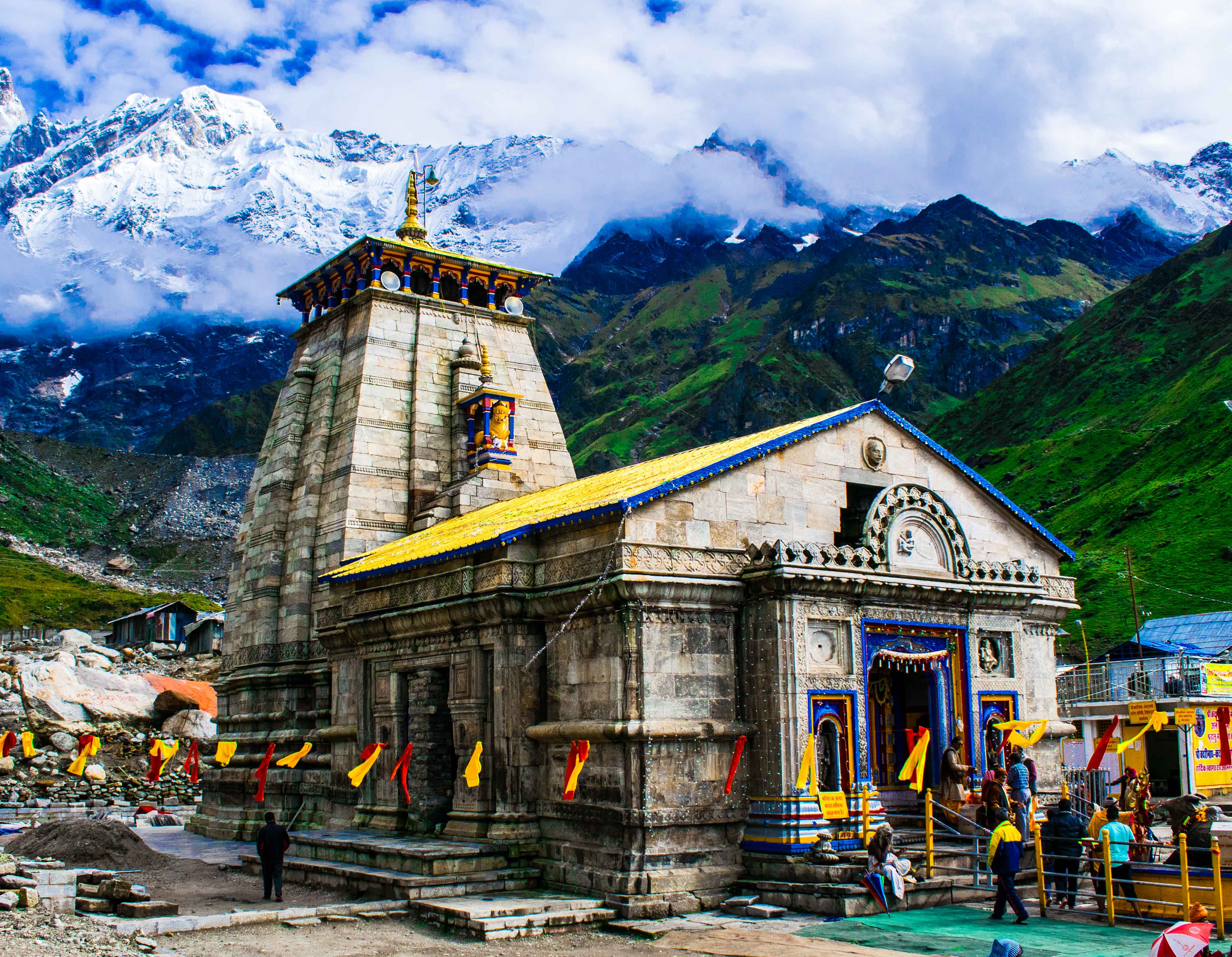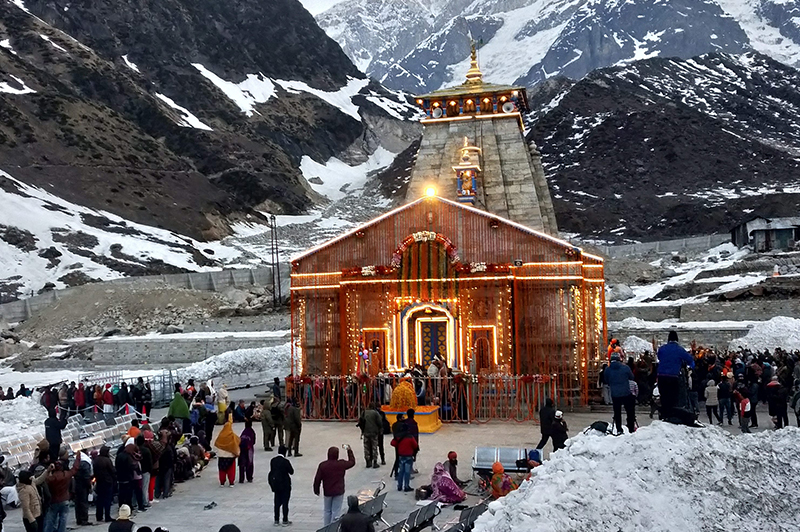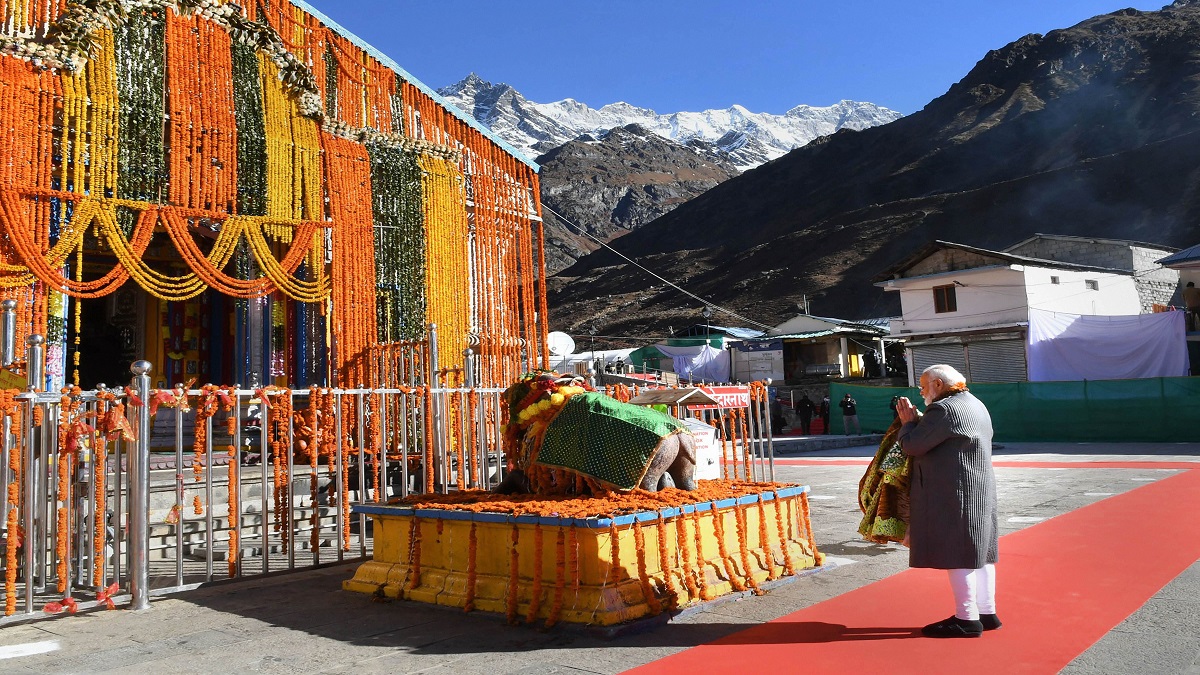Kedar Nath Temple, Uttarakhand.
Introduction
Perched at an altitude of 3,583 meters (11,755 feet) amidst the Garhwal Himalayas, the Kedarnath Temple in Uttarakhand is a revered shrine dedicated to Lord Shiva. Located near the headwaters of the Mandakini River with the Kedarnath Peak (6,940 meters) looming majestically overhead, this ancient temple is one of the twelve Jyotirlingas (divine light pillars of Shiva) and a key destination in the Char Dham and Panch Kedar pilgrimage circuits. Known for its rugged beauty and spiritual potency, Kedarnath attracts devotees and adventurers alike, despite its remote and challenging access.

History
The Kedarnath Temple’s history intertwines mythology with tangible antiquity, standing as a symbol of resilience against nature’s fury.
Mythological Origins: Hindu scriptures, including the Shiva Purana, link Kedarnath to the Pandavas of the Mahabharata. After the Kurukshetra war, the Pandavas sought Lord Shiva’s forgiveness for their sins. Shiva, elusive, took the form of a bull and hid in the Himalayas. When the Pandavas tracked him to Kedarnath, he submerged into the earth, leaving only his hump visible—now worshipped as the conical Shiva Lingam in the temple. The remaining parts of his body are said to have emerged at four other sites, forming the Panch Kedar (Tungnath, Rudranath, Madhyamaheshwar, and Kalpeshwar).
Another legend ties Kedarnath to Lord Vishnu’s Nara-Narayana avatars, who worshipped Shiva here, prompting him to establish this sacred abode after vacating Badrinath.
Historical Background: The temple’s origins are traditionally dated to the 8th century CE, attributed to Adi Shankaracharya, who is believed to have revived and formalized its sanctity. Archaeological evidence suggests the current structure, built in the Katyuri style with massive gray stone slabs, dates back over 1,000 years, though inscriptions hint at renovations by subsequent rulers, including the Garhwal kings. The temple miraculously survived the 2013 Uttarakhand floods, which devastated the surrounding town, reinforcing its divine aura. A large rock behind the temple, believed to have diverted the floodwaters, is now revered as Bhim Shila.

Nearby Places
Kedarnath’s high-altitude setting offers proximity to several spiritual and natural wonders:
1. Bhairavnath Temple (1 km): A small shrine dedicated to Bhairav (Shiva’s fierce form), guardian of Kedarnath, offering panoramic views of the valley.
2. Gaurikund (16 km trek downhill): The starting point of the Kedarnath trek, known for its hot springs where Goddess Parvati is said to have meditated.
3. Vasuki Tal (8 km trek): A serene high-altitude lake (4,135 meters) surrounded by snow-capped peaks, ideal for trekkers with spiritual inclinations.
4. Chorabari Tal (Gandhi Sarovar) (3 km trek): A tranquil lake where Mahatma Gandhi’s ashes were immersed, offering stunning reflections of the Kedarnath range.
5. Tungnath Temple (40 km by road + trek): The highest Shiva temple in the world (3,680 meters), part of the Panch Kedar, accessible via Chopta.
6. Sonprayag (20 km): A scenic confluence of the Mandakini and Basuki rivers, a key stop en route to Kedarnath.
7. Triyuginarayan Temple (25 km from Sonprayag): A historic site where Shiva and Parvati’s wedding is believed to have occurred, marked by an eternal flame.

Festivals
Kedarnath Temple’s festivals reflect its deep spiritual heritage:
1. Temple Opening and Closing Ceremonies (April/May and October/November): The temple opens on Akshaya Tritiya (e.g., May 7, 2025, at 7:00 AM) and closes on Bhai Dooj, with elaborate rituals. The deity is shifted to Ukhimath’s Omkareshwar Temple for winter.
2. Shivratri (February/March): Celebrated with fervor at Ukhimath during the temple’s closure, drawing devotees to honor Shiva’s Jyotirlinga form.
3. Badri Kedar Festival (June): An 8-day cultural event with Kedarnath and Badrinath, featuring traditional music, dance, and devotion.
4. Shravan Month (July/August): A peak pilgrimage period when devotees undertake the Kanwar Yatra, offering Ganga water to the Shiva Lingam.

Contact Details
Managed by the Shri Badrinath-Kedarnath Temple Committee (BKTC), the temple lacks a direct contact line but offers these administrative options:
Shri Badrinath-Kedarnath Temple Committee (BKTC):
Address: BKTC Office, Joshimath, Chamoli, Uttarakhand – 246443
Phone: +91-1389-222124 (Joshimath Office)
Email: badarikedar.tc@gmail.com
Website: www.badrinath-kedarnath.gov.in – Provides yatra updates, registration, and donation options.
Uttarakhand Tourism Development Board:
Phone: +91-135-2559898
Email: info@uttarakhandtourism.gov.in
Website: www.uttarakhandtourism.gov.in
Helicopter Services:
Pawan Hans: +91-9711555516 (Bookings from Guptkashi/Phata/Sersi).

Visiting Information
Location: Kedarnath, Rudraprayag District, Uttarakhand, India (PIN: 246445)
Timings: 4:00 AM to 3:00 PM and 5:00 PM to 9:00 PM (open May to November).
Entry Fee: Free; special pujas range from INR 210 (Rudrabhishek) to INR 11,700 (Mahabhishek).
How to Reach:
By Air: Jolly Grant Airport, Dehradun (239 km to Gaurikund), then road/trek.
By Rail: Rishikesh Railway Station (216 km to Gaurikund), followed by bus/taxi.
By Road/Trek: Drive to Gaurikund (from Rishikesh, 230 km) via NH-7, then a 16 km trek (or pony/palki/helicopter).

Tips for Visitors
Kedarnath’s high altitude and rugged terrain demand careful planning. Here are key tips:
1. Best Time to Visit: May-June and September-October offer stable weather. Avoid monsoons (July-August) due to landslides and winter (November-April) when the temple shuts.
2. Trekking Preparation: The 16 km trek from Gaurikund takes 6-8 hours. Wear trekking shoes, carry a stick, water, and rain gear. Pithus (porters), ponies, or palkis are available (INR 4,000-7,000 round trip).
3. Clothing: Pack heavy woolens, thermals, and a windproof jacket. Temperatures range from 0-15°C even in summer.
4. Health Precautions: Acclimatize in Rishikesh or Guptkashi. Carry oxygen cylinders (available en route), painkillers, and energy bars. Avoid overexertion.
5. Temple Etiquette: Photography is prohibited inside. Wear traditional Dresses., remove shoes, and join the queue early (5:00 AM) for early darshan.
6. Connectivity and Cash: No ATMs beyond Guptkashi; carry cash. Mobile signals (BSNL/Jio) are weak in Kedarnath.
7. Accommodation: Basic GMVN tents or private lodges (INR 500-2,000/night) in Kedarnath; book ahead. Guptkashi or Sonprayag offer better stays.
8. Safety: Start the trek by 4:00 AM to avoid evening curfews. Check weather for rain or snow risks.
9. Helicopter Option: Book flights (INR 7,000-10,000 round trip) early via BKTC or private operators for a quicker visit (10-minute ride).
Dear Hindu relatives…
Like this, there are wonderful historical explanations along with Photos of 200+ North Indian Temples .
If you take any Subscription Plan… you will receive the premium version of Bhaaratha Vahini.
This premium version grants you unlimited access to all contents in this App, including our “BHAARATHA VAHINI” Monthly Magazine (E-Paper).


